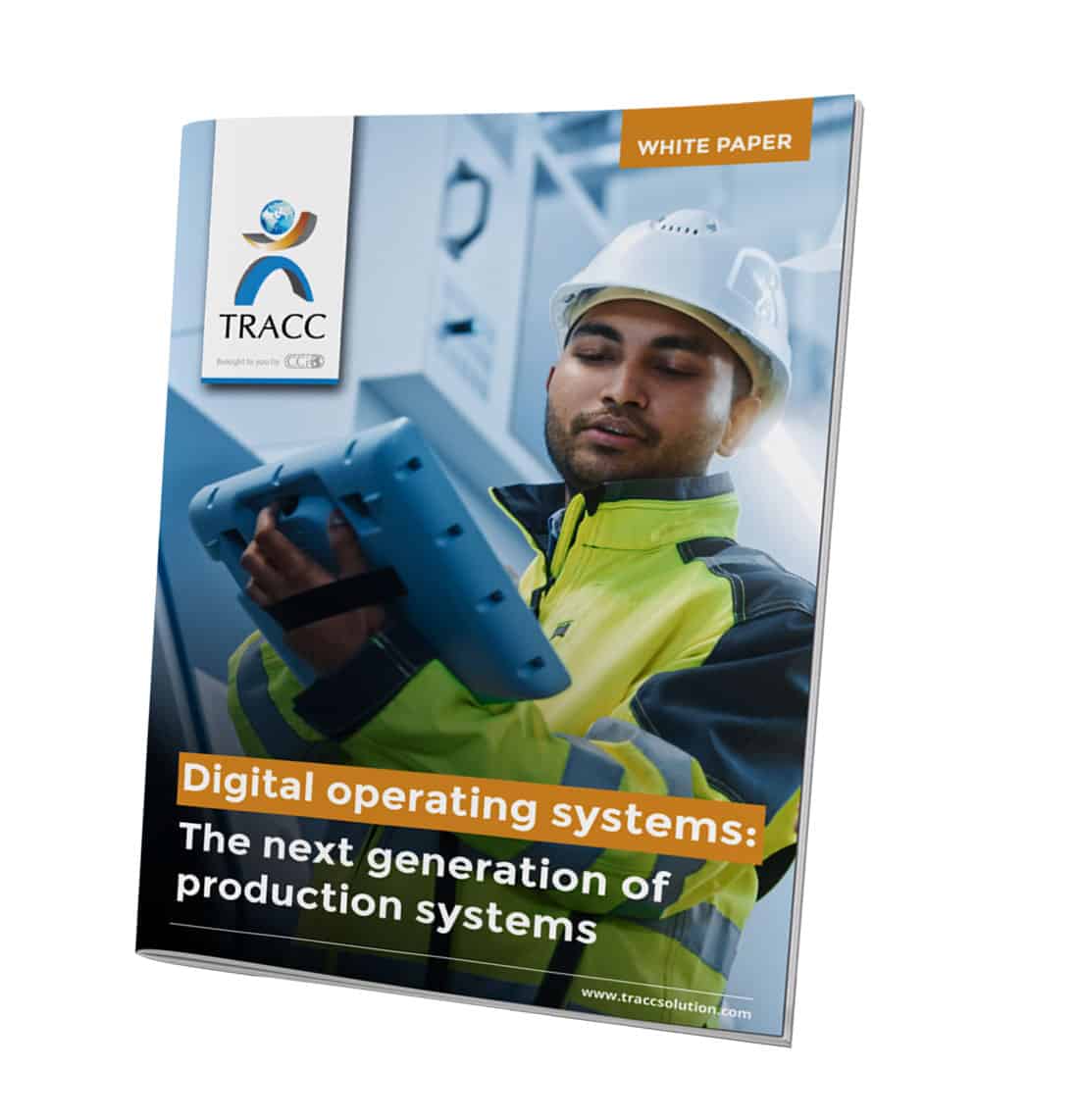
4 key maturity assessment considerations to inform your DOS implementation
In today’s fast-paced and ever-changing world, organisations need to be digitally capable and willing to continuously evolve. A digital operating system (DOS) is an advanced production system that integrates smart manufacturing with lean principles. With a DOS, manufacturers can pre-empt change with agility and maintain their hard-won competitive advantages. A maturity assessment is the crucial first step in determining an organisation’s DOS readiness.
Established corporate production systems that emphasise lean operations focus on improving organisational efficiency. By leveraging advanced, relevant technologies such as data analytics and machine learning, a DOS pushes this focus even further, harnessing the principles of continuous improvement (CI). Thanks to its advanced digital capabilities, a DOS does not only focus on improving day-to-day operational efficiency, it uses advanced analytics to harness data for overall organisational performance improvement.
Download the white paper Digital operating systems: The next generation of production systems to find out more about capitalising on the benefits of DOS.

With lean and digital working together, manufacturing organisations can make better, faster business decisions and benefit from a high-performing supply chain. However, before making a transition to a DOS, companies need to have a solid understanding of their existing digital capabilities. Thus, a digital maturity assessment is the crucial first step in any DOS implementation strategy.
The importance of a maturity assessment
Transformative organisational change, even when positive, can cause systemic shocks that upset people and interrupt their productivity. A company’s digital transition needs careful management, collaborative implementation and a clear understanding of what digital and integrative improvement capabilities already exist – as well as those that do not. This starting point provides a crucial foundation that steadies the impact of change.
A maturity assessment reviews an organisation’s current processes, systems and skills to determine and design a tailored DOS implementation strategy. Technological advancement has broadened the scope and potential of digital transformation; however, to achieve lasting built-in success, improvement must be staged in sync with the organisation’s existing capacity for change. This requires a strategy founded upon company specific knowledge of processes, people and systems.
How to approach your DOS maturity assessment
To determine the relevant starting points for their DOS implementation strategies, manufacturing organisations should review these four priority areas when assessing their levels of maturity.
1. Current digital capabilities
To leverage the benefits of a DOS, organisations need to appraise their existing business strategies, digital skills, IT architectures, network alignments, leadership visions and interdepartmental collaborations. By identifying the gaps between their company’s baseline state and its desired digital end state, management can draft an appropriate road map for a smooth transition that achieves its intended purpose with minimal upset.
Some manufacturing organisations are still steeped in traditional, siloed organisational design while others are further along their digital transformation journeys. To optimise and evolve existing digital capabilities requires a digital-first mindset that is embedded in the company’s operational strategy and goals. A successful transition to a DOS is not the IT department’s mandate; it belongs to and depends upon the organisation as a whole.
To that end, talent – across the company – must be empowered to perform with digital confidence. The exponential curve of technological advancement means that digital skills need consistent renewal. A formal upskilling programme is thus integral to an organisation’s human resources management. Training initiatives must be consistent but also aligned with the company’s digital transformation strategy and timeline to keep pace with improvements and the demands of progress.
2. Integrative improvement
Organisational digital transformation is a process that requires an integrated approach to continuous improvement (CI). Integrative improvement advances traditional CI principles by integrating all functions – people, technologies and processes – within an organisation. This synchronisation is embedded into the very fibre of the company, making it central to a successful DOS implementation and, therefore, to achieving operational excellence.
CI leaders in charge of transformative organisational change must use integrative improvement methodologies to guide a DOS implementation. Functional areas for attention include quality, planning and maintenance – with a view to improving supply chain performance by seamlessly integrating it with manufacturing operations. This strengthens the company’s overall capabilities to withstand future shocks by breaking down all siloes and connecting teams through data-enabled collaboration.
A maturity assessment undertaken to inform a DOS implementation strategy needs to review existing CI programmes and motivate for integration. This shift in approach will enable companies to review each step of their digital transformation journeys, help teams integrate improvements as they happen, and encourage a relevant adoption of new technologies for sustainable performance improvements.
3. Operations alignment
Manufacturing organisations are under increasing pressure to improve their speed, agility and efficiency in order to stay competitive. Changing market conditions have exposed the inherent limitations of lean production systems such as total quality management (TQM), the Toyota Production System (TPS) and world class manufacturing (WCM). These lean-based systems were not built for the levels of speed and agility required by a modern organisation. They are simply unable to leverage the benefits of advanced and relevant technology and align operations for sustainable performance improvements.
Operational alignment is key to an organisation’s integrative improvement and successful DOS implementation. By connecting its internal processes with its external stakeholders, manufacturing organisations are better able to identify potential problem areas and bottlenecks in real-time for immediate attention. To benefit from operational alignment, employees need to be digitally empowered and committed to the delivery of continuous, integrated improvement.
One indicator of a digitally mature organisation is that it has leveraged new technologies and skills to successfully converge lean and digital principles for greater speed and agility. A fully-fledged DOS aligns manufacturing processes and operating systems with supply chains and customer networks to achieve this transformative digital potential. By assessing this alignment – or lack thereof – in their own organisations, management teams can identify the gaps in their digital maturity levels and address them in their DOS implementation strategies.
4. Value chain alignment
Similar to operational alignment, value chain alignment considers an organisation’s external networks, supply chains and stakeholders as integral components of its digital transformation journey. When people, technologies and processes are aligned effectively, siloed operations are replaced with a high functioning Demand-driven Value Network (DDVN).
A DDVN is a digitally driven business environment. It is able to identify customer demand at the point of purchase, produce accurately to meet demand, make commitments profitably through integrated business planning (IBP) and instinctively understand market patterns to ensure that innovation is based on fostering sustainable growth.
Its ability to manage multiple networks of stakeholders and suppliers holistically for maximum value speaks to a company’s level of digital maturity. By reviewing its customer and value network impacts, identifying problem areas and their causes, an organisation can assess its state of digital maturity and implement a DOS strategy that is nuanced to meet the company’s specific needs.
Use the maturity assessment to unlock the power of a DOS
DOS is the next-generation production system that harnesses the power of lean and digital for maximised manufacturing operations. Speed and agility are the competitive drivers of the digital age. Smart manufacturing can unlock new levels of organisational productivity, embed future manufacturing capabilities and build a company’s sustainable competitive advantage. It can connect people and processes across an organisation, and bring external networks and stakeholders into the fold for better results.
A modern production system uses new technologies to redesign manufacturing organisations and evolve their production systems for enhanced value creation. A successfully implemented DOS connects a web of internal processes with external networks, aligning factory floor operations with the supply chain for greater collaboration and efficiency. Driven by data and empowered by digitally-enabled talent, a DOS recalibrates a company’s core from a traditional supply chain to an interconnected value network.
To leverage the power of the DOS, manufacturers need to first understand where their current operations are digitally strong and where they are weak. A maturity assessment that addresses the above four priority areas will help any organisation begin – or continue – their digital transformation journey by providing it with inputs and insights for an informed and relevant implementation strategy.
Visit our Digital operating systems resource page and find out more about unlocking the power of DOS in your organisation.

